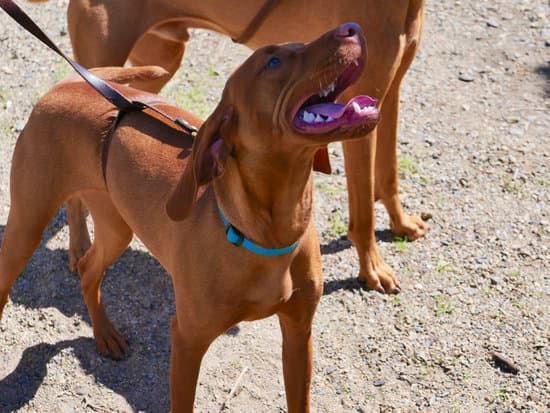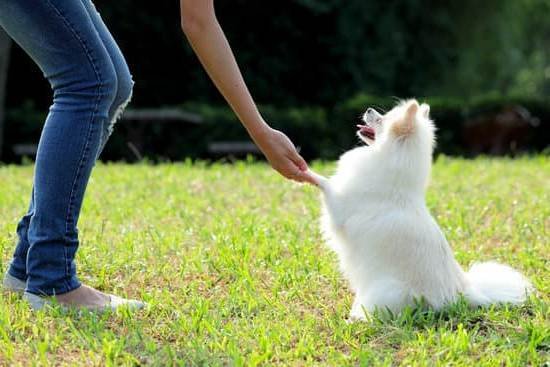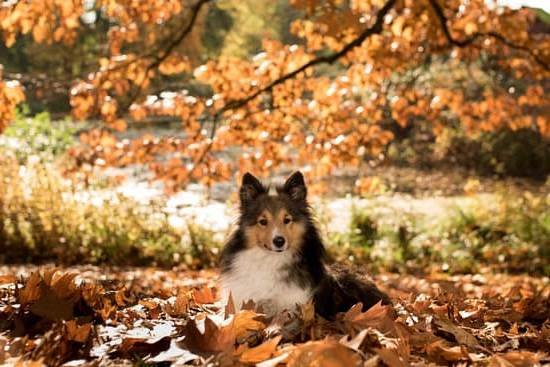Training your dog to pee and poop outside is an essential part of responsible pet ownership. Not only does it make for a cleaner and more pleasant home environment, but it also promotes good hygiene and reduces the risk of spreading diseases. In this article, we will discuss the importance of training your dog to do their business outside, as well as provide tips and techniques for successful potty training.
Understanding your dog’s behavior is crucial when it comes to potty training. By recognizing your dog’s signals and patterns, you can anticipate when they need to go outside and reduce the likelihood of accidents indoors. Establishing a consistent routine for bathroom breaks plays a significant role in reinforcing this behavior and teaching your dog where it’s appropriate to relieve themselves.
Positive reinforcement is the key to successfully training your dog to go outside. Using rewards such as treats or verbal praise can encourage the desired behavior and make the training process more enjoyable for both you and your furry friend. Additionally, employing various potty training techniques can help you effectively communicate with your dog and set them up for success in learning to pee and poop outside.
Understanding Your Dog’s Behavior
One of the first steps in understanding your dog’s behavior is observing their body language. Some common signs that a dog needs to go outside include pacing, sniffing around, circling a specific area, or suddenly becoming restless. By recognizing these signals, you can proactively take your dog outside before accidents happen indoors.
Another aspect of understanding your dog’s behavior is being mindful of their bathroom habits. Dogs often have a specific routine for when they need to relieve themselves, such as after sleeping, eating, or playing. By recognizing these patterns, you can create a consistent schedule for bathroom breaks and increase the likelihood of successful outdoor potty training.
Additionally, some dogs may exhibit vocalizations or other audible cues when they need to go outside. Whining, barking, or scratching at the door are all potential indicators that your dog needs a bathroom break. Paying attention to these behaviors will enable you to respond promptly and facilitate the training process effectively.
By recognizing and understanding your dog’s signals and patterns, you can establish a strong foundation for successful potty training. This awareness will allow you to anticipate your dog’s needs and guide them towards going outside at the appropriate times. Ultimately, this will lead to a smoother and more efficient training process on how to train my dog to pee and poop outside.
Establishing a Routine
Training your dog to pee and poop outside starts with establishing a consistent routine for bathroom breaks. This routine not only helps your dog understand when it’s time to go outside, but also sets expectations for their behavior. Here are some tips on how to create a solid bathroom schedule for your furry friend:
- Set specific times for bathroom breaks: Dogs thrive on routine, so it’s important to take them out at the same times every day. This includes first thing in the morning, after meals, before bedtime, and any time they show signs of needing to go.
- Use a designated potty area: Designate a specific spot in your yard or neighborhood where you want your dog to do their business. By consistently taking them to this spot, you’re teaching them that this is the appropriate place to relieve themselves.
- Monitor their behavior: Pay attention to your dog’s behavior and body language. If you notice them sniffing around or circling an area, it may be a sign that they need to go potty.
Consistency is key when it comes to establishing a routine for bathroom breaks. By following these steps and being patient, you can effectively train your dog to understand when and where they should pee and poop outside.
Remember that every dog is different, so it’s important to be flexible and adjust the routine as needed based on their individual needs and progress. With time and patience, you’ll find that your furry friend will learn how to ask for bathroom breaks appropriately.
Positive Reinforcement
Understanding Positive Reinforcement
Positive reinforcement is a key aspect of training your dog to pee and poop outside. This technique involves rewarding your dog for exhibiting the desired behavior, in this case, going to the bathroom outside. When your dog understands that they will be rewarded for this behavior, they are more likely to repeat it in the future. Rewards can range from verbal praise and affection to treats or toys.
Implementing Positive Reinforcement
When implementing positive reinforcement, it’s important to provide the reward immediately after your dog has peed or pooped outside. This helps them make the connection between the behavior and the reward. Additionally, consistency is crucial when using positive reinforcement. Every time your dog successfully goes to the bathroom outside, be sure to praise and reward them.
Avoiding Punishment
It’s essential to avoid using punishment as a method of training your dog to go outside. Punishing your dog for accidents inside can create fear or anxiety, which may lead to even more accidents. Instead, focus on rewarding and praising your dog for their successes. This approach creates a positive association with going outside and reinforces the desired behavior.
By utilizing positive reinforcement techniques and being consistent with rewards, you can effectively train your dog to pee and poop outside. It’s important to give them time and patience as every dog learns at their own pace. With dedication and persistence, you can successfully teach your furry friend this important skill.
Potty Training Techniques
When it comes to potty training your dog to pee and poop outside, there are a few techniques that can help you achieve success. One effective method is crate training, which involves keeping your dog in a crate when they are not being supervised.
Dogs typically do not like to soil their living area, so they will learn to hold it until they are taken outside. It’s important to gradually increase the amount of time your dog spends in the crate to avoid any accidents.
Another technique is using verbal or hand signals to communicate with your dog when it’s time for them to go outside. By using consistent signals and commands, your dog will start to associate these cues with the act of going potty. This can be especially helpful for dogs who may have difficulty understanding what you want from them.
In addition, setting a feeding schedule can also aid in potty training your dog. By feeding your dog at the same times each day, you can predict when they will need to relieve themselves. This allows you to take them outside at the appropriate times, increasing the likelihood that they will eliminate outdoors rather than indoors.
| Technique | Description |
|---|---|
| Crate Training | Keep your dog in a crate when unsupervised; gradually increase time spent in crate |
| Verbal/Hand Signals | Use consistent signals and commands; helps dogs understand when it’s time to go potty |
| Feeding Schedule | Set regular feeding times; predict when they will need to relieve themselves |
Dealing With Accidents
Recognizing Accidents and Setbacks
During the process of training your dog to pee and poop outside, it is important to understand that accidents and setbacks are a normal part of the process. It is crucial to recognize when your dog has had an accident indoors and understand that it is not a sign of failure.
Dogs may have accidents due to a variety of reasons such as illness, anxiety, or simply not being fully trained yet. By recognizing these accidents as opportunities for learning and improvement, you can better handle setbacks during the training process.
Reacting to Accidents
When accidents happen, it is important to react calmly and avoid punishing your dog. Instead, focus on cleaning up the mess thoroughly using an enzymatic cleaner to remove any scent that might attract your dog back to the same spot. Reacting negatively or harshly can actually make the problem worse and hinder the training process. Instead, continue with positive reinforcement for successful outdoor bathroom breaks and be patient with your dog as they learn the new routine.
Modifying Training Techniques
If you notice a pattern in your dog’s accidents, consider modifying your training techniques. For example, if your dog consistently has accidents at a certain time of day, adjust their bathroom schedule accordingly.
Additionally, keep an eye on any signs or signals from your dog that indicate they need to go outside. By making small adjustments and staying patient, you can effectively navigate through setbacks and accidents during the training process on how to train my dog to pee and poop outside.
Patience and Consistency
Training your dog to pee and poop outside requires patience and consistency. This section will provide you with valuable tips on how to maintain patience and consistency throughout the training process.
1. Set realistic expectations: It’s important to understand that potty training takes time and every dog is different. Patience is key when it comes to training your dog to go outside for bathroom breaks. Be prepared for setbacks and be patient with your furry friend as they learn this new behavior.
2. Stay consistent with the schedule: Dogs thrive on routine, so it’s essential to establish a consistent schedule for bathroom breaks. Take your dog out at the same times every day, such as after meals, after waking up, and before bedtime. Consistency will help your dog understand when it’s time to go outside.
3. Use positive reinforcement: Consistently praise and reward your dog when they successfully pee or poop outside. Positive reinforcement can help reinforce the behavior you want from your dog. This could include giving them treats, verbal praise, or even extra playtime outdoors. Remember that punishment for accidents inside the house will only confuse and stress out your pet.
4. Be patient with accidents: Accidents are bound to happen during the potty training process. Instead of getting frustrated, stay calm and clean up any messes without scolding your dog. Punishing them for accidents may cause fear or anxiety about going to the bathroom in front of you, which could hinder their progress in learning where they should go.
By maintaining patience and consistency throughout the training process, you’re setting both yourself and your furry friend up for success in learning how to train them properly.
Troubleshooting Common Issues
Dealing with accidents during the potty training process is a common challenge that many dog owners face. It’s important to remember that accidents are a natural part of the learning process, and they should be handled with patience and understanding.
When your dog has an accident inside, it’s crucial to avoid punishment or scolding, as this can create fear and anxiety in your pet. Instead, focus on reinforcing positive behavior by taking your dog outside immediately after the accident and praising them when they go in the correct spot.
Another common issue that dog owners may encounter when training their pets to pee and poop outside is a lack of progress or consistency. In these cases, it’s essential to re-evaluate your potty training techniques and routines. Consider whether your schedule is consistent enough, if you’re using consistent commands, and if there are any other factors that may be contributing to the lack of progress. Making adjustments and staying patient is key to overcoming this challenge.
Sometimes, despite following all the potty training techniques and strategies, some dogs may continue to have accidents inside. In such cases, it may be beneficial to consult a professional dog trainer or behaviorist for additional guidance.
They can provide tailored advice based on the specific behaviors and needs of your dog, helping you overcome any persistent challenges in the potty training process. Remember that every dog is different, and seeking expert help can make a significant difference in successfully training your dog to pee and poop outside.
Training my dog to pee and poop outside is not always an easy task; however, with consistency, positive reinforcement, patience, understanding of my dog’s behavior patterns will ensure successful results for both me as an owner as well as my furry friend.
Conclusion
In conclusion, successfully training your dog to pee and poop outside is not only beneficial for you as a pet owner but also for the well-being and happiness of your furry friend. By understanding your dog’s behavior, establishing a routine, and using positive reinforcement, you can effectively teach your dog where it is appropriate to do their business. It may take time and patience, but the end result will be well worth the effort.
Remember that consistency is key when it comes to potty training your dog. By following a consistent schedule for bathroom breaks and using positive reinforcement techniques, you can help your dog understand what is expected of them. Additionally, being patient and understanding that setbacks may occur will help you stay motivated throughout the training process.
Once you have successfully trained your dog to pee and poop outside, you will experience the freedom of not having to clean up accidents indoors. You will also strengthen the bond with your pet and enjoy peace of mind knowing that they are well-behaved. By following the tips and techniques outlined in this article, you can ensure a smooth and successful potty training experience for both you and your beloved canine companion.
Frequently Asked Questions
How Long Does It Take to Train a Dog to Pee and Poop Outside?
The time it takes to train a dog to pee and poop outside can vary depending on the dog’s age, breed, and previous training. On average, it may take a few weeks to a few months of consistent training.
Why Won’t My Dog Pee and Poop Outside?
There are several reasons why your dog may be reluctant to pee and poop outside. It could be due to fear of outdoor noises, unfamiliar surfaces, or simply not understanding that they are supposed to go outside. Health issues should also be considered.
How Do I Get My Stubborn Dog to Pee Outside?
If you have a stubborn dog that refuses to pee outside, patience and consistency are key. Create a routine for bathroom breaks, offer rewards and praise when they do their business outside, and avoid punishment for accidents indoors. Gradually increase outdoor time to help them get used to it.

Welcome to the blog! I am a professional dog trainer and have been working with dogs for many years. In this blog, I will be discussing various topics related to dog training, including tips, tricks, and advice. I hope you find this information helpful and informative. Thanks for reading!





